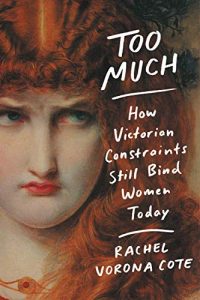
How Ramona Quimby Taught a Generation of Girls to Embrace Brashness
Rachel Vorona Cote on Having the Right to Be 'Too Much'
Plucky heroines abound across Anglo and American children’s literature, yet their own struggles with gendered strictures and the trajectories of their comings-of-age often present conflicting narratives. Perhaps one of the most uncompromising—and uncompromised—children’s heroines from the twentieth century is Pippi Longstocking, literary creation of Swedish writer Astrid Lindgren. Disgusted by the ways in which adults “browbeat” and “trampled on” their children, she dreamed up Pippi, “the strongest girl in the world,” in the winter of 1941. Her daughter, Karin, seven years old at the time, was confined to her bed with pneumonia, and yearning for entertainment. By 1945, the first book, named for the titular character, was published to great acclaim, although one reviewer, aghast, referred to Pippi as “psychotic.”
Certainly Lindgren’s character would have been unconventional in any case, but she is all the more extraordinary for her femaleness. Like Anne Shirley of L. M. Montgomery’s Anne of Green Gables, her plaited hair blazes a combustible red— though, unlike Anne, she is perfectly content with her appearance. She wears her freckles proudly and is offended by beauty products vowing to eliminate them. And she wields wild, magical strength—she can easily lift a horse—although she adheres to a code of pacifism. The child of a mother who died when she was a baby and a ship captain father who is lost at sea, Pippi lives alone with a pet monkey, and she resists with vivacity adults’ attempts to corral her into conventional childhood activities.
For instance, she refuses to attend school, eludes those who would toss her into foster care, and she goes to bed whenever she pleases (she also drinks coffee). It’s a staggeringly solitary life for a nine-year-old, but Pippi isn’t frightened: “Don’t you worry about me,” she assures everyone who indicates solicitude. “I’ll always come out on top.” Although Lindgren never referred to herself as a feminist per se, Pippi’s staunch independence, and her gusto for life, one lived entirely according to her own calibrations, reveals a progressive interpretation of gender that remains relatively conspicuous even today. Pippi’s disinclination toward conformity and her disinterest in yielding to the crush of adult authority posits a little girl’s entitlement to disrupt—not because she harbors some precocious agenda, but because she demands the right to be fully herself, fully too much.
In 1955, Ramona Quimby, a near American cousin of Pippi Longstocking, tumbled into the picture, all scraped knees and exuberant doodles. She and her creator, author Beverly Cleary, united with Pippi and Lindgren in literary confederation, bright beacons for little girls who have been variously told they are too much: too loud or pesky or hyperactive. Upon a cursory read, it might be tempting to describe Ramona as mischievous, but Cleary herself has protested against this accusation, and with good reason. Ramona loves the world with ferocity; she does not so much want to disturb it as she yearns to discover, to turn it over, examine every piece and crook and marvel at why each creature, commodity, and substance exists the way it does. “She was a girl who could not wait. Life was so interesting she had to find out what happened next,” explains Cleary in Ramona the Pest.
But when put in practice, Ramona’s philosophy stirs controversy, and all too frequently the intrepid heroine contends with indictments of her disposition. Her demure, long-suffering older sister, Beatrice— dubbed “Beezus” by Ramona when she is learning to speak— lobs them at her regularly. “Beezus felt that the biggest trouble with four-year-old Ramona was that she was just plain exasperating,” writes Cleary at the start of the series’ first book, Beezus and Ramona. “If Ramona drank lemonade through a straw, she blew into the straw as hard as she could to see what would happen. If she played with her finger paints in the front yard, she wiped her hands on the neighbors’ cat.”
But as we quickly understand, Beezus is not the enemy. Focalizing Beezus and Ramona through Beezus’s perspective—when Ramona is still in preschool—prompts us to empathize with the aggrieved older sister, the girl who is steadied by rules and orderliness and placid afternoons stitching potholders. Beezus struggles to comprehend how Ramona, whom she dearly loves, could be so defiantly opposed to convention.
And yet, Ramona, whose family lives in the working-class Pacific Northwest, does not eschew gender and behavioral norms out of calculated defiance, but rather out of disbelief that metrics of femininity and propriety could matter in the grand scheme of things. It would be vastly oversimplifying to refer to Ramona as a tomboy; she nurtures crushes on classmates and wants a pair of gleaming red galoshes that match the ones worn by other girls in her kindergarten class. But most crucially, Ramona is dissatisfied by the template for any childhood that doesn’t accommodate her brash exuberance, or that would compel her to assimilate into the status quo.
Two of Ramona’s most prickling fears are impossibly intertwined: first, that her affection for all those most important to her goes unrequited, and second, that she cannot be loved for precisely who she is—impetuous, temperamental, profoundly sensitive, and, yes, a little bit of a show-off. Her fondness, once coaxed, thumps ardently from her staunch and earnest heart. However irksome her family might be, she is both fiercely proud and protective of them. She intuits threads of kindness stitched inside the grimy cheeks of playground boys—the infamous “yard apes.”
If Ramona senses that her impulses are not always compatible with suburban niceties, she refuses to diminish herself.
She idolizes her kindergarten and third grade teachers, Miss Binney and Miss Whaley, respectively, and registers their mentorship as maternity—the schema she knows best. But teachers, Ramona learns, cannot love with the exclusivity of a parent. Miss Binney in particular breaks Ramona’s heart again and again when she lavishes praise on other students, especially those whose personalities contrast sharply with Ramona’s own rough-and-tumble demeanor—the prim, smug Susan, for instance, who lacks the bona fide sweetness of her similarly aggravating forebear, Simple Susan, but who also knows the benefits to performing docility. Even if Ramona were capable of such a masquerade, she would reject it on principle. And she is disconsolate when beloved Miss Binney resorts to harsher methods of discipline in an effort to teach Ramona the necessity of boundaries (is it really her fault if Simple Susan 2.0 has “boing boing curls” that are every moment pleading to be pulled?).
It’s in the atmosphere, our disdain for too muchness, and Ramona absorbs it, recognizing in her quivering little bones that this quality propels her and that sometimes it leads her astray. But if Ramona senses that her impulses are not always compatible with suburban niceties, she refuses to diminish herself. Her character is not a problem to be solved. She demands that those who comprise her universe bear witness to her tangled, wild yearnings—and, what’s more, that they embrace her for them.
She cried harder than she ever had cried in her life. She cried until she was limp and exhausted.
Then Ramona felt her mother’s hand on her back. “Ramona,” she said gently, “what are we going to do with you?”
With red eyes, a swollen face, and a streaming nose, Ramona sat up and glared at her mother. “Love me!” Her voice was fierce with hurt. Shocked at her own words, she buried her face in the pillow. She had no tears left.
Ramona is devastated by her first grade progress report, in which her well-meaning but aseptic teacher notates her lack of self-control, and her mother’s subsequent remark that she “must try to grow up.” She interprets these criticisms as a larger condemnation of her person. And we can easily understand her position. Although readers are meant to empathize with those who are baffled by Ramona—like her teacher, the pedestrian Mrs. Griggs—and although Ramona, like most children, neglects to consider the impact of her every action, Cleary never leaves us in doubt of Ramona’s singularly queasy fit within a society that can oftentimes feel tight and chafing. With the same instinct that directs her antics, Ramona understands that the world does not anticipate her full-throttle vivacity and that, as such, it does not always appreciate her.
Nonetheless, she does not ask to be loved; like Jane Eyre she demands it, and she doesn’t question her due as a person stumbling through a bewildering world. Her tear-filled imperative—love me—is fraught with the barbs of growing pains, but it is assertive. It is, moreover, analogous to what she asks of herself.
For the first time Ramona looked into her very own mirror in her very own room. She saw a stranger, a girl with red eyes and a puffy, tearstained face, who did not look at all the way Ramona pictured herself. Ramona thought of herself as the kind of girl everyone should like, but this girl . . .
Ramona scowled, and the girl scowled back. Ramona managed a small smile. So did the girl. Ramona felt better. She wanted the girl in the mirror to like her.
This moment of self-recognition follows on the heels of a furious outburst at school, where Ramona, upon realizing the horrid Susan has copied her artwork, destroys it and her own as well. Ramona’s young sense of self turns on the conviction that she is inimitable: consequently, Susan’s offense—the illegitimate invocation of sameness—stirs in Ramona an aversion so extreme as to be indecipherable, especially to adults like Mrs. Griggs. But Ramona does not always attempt to explain, to usher along those who cannot easily empathize with her decisions. After all, for the duration of Ramona the Brave, she is only six years old, and she assumes, in confident hastiness, that even if she is misunderstood, she need not account for herself.
[pullqute]To this day, a little girl’s too muchness is not a right, but a privileged exception typically reserved for white, able-bodied heroines. [/pullquote]
Because exuberant little girls are so often compelled to demystify their emotions and the behaviors motivated by them, Ramona’s tendency to act and then delay the debriefing satisfies our ache of recognition. Yet, as Ramona peers at her reflection, damp and flush, it’s clear that she is rarely served well by this approach. Too Much little girls like Ramona, the fortunate ones, anyway, learn a flinty lesson—that their self-preservation demands near-saintly patience with a world disinclined to accommodate them. Cleary’s heroine must learn how to negotiate with the Griggses of the world, who would prefer it if she returned to her seat, folded her hands, and emulated the youthful femininity of her sister, Beezus, and even the dreaded Susan. Ramona’s first duty is to the little girl in the mirror, and Cleary suggests that she will, as she grows older, devise ways to live in the brash, loud way she relishes—in the way that feels truest—without always being so handily diminished. But she will struggle in this endeavor. There is never a guarantee that Ramona the Brave—the Ramona who demands every day to exist according to her own metrics, whose dedication to self-honesty will not permit her to behave as anything other than her instinctual self—will ever be regarded as anything but a pest.
To this day, a little girl’s too muchness is not a right, but a privileged exception typically reserved for white, able-bodied heroines. Ramona Quimby remains an exemplar of young, girlish empowerment not only because of Cleary’s literary perceptiveness, but also because the ranks of Too Much girls have hardly thickened, even if the atmosphere has softened. We no longer languish beneath the oppressive virtue of a thousand Simple Susans, thank goodness. We’ve slogged to the lip of Wonderland’s inhospitable terrain, in which Lewis Carroll’s Alice—adventuresome, inquisitive, but ultimately marked by authorial neuroses—ambles through a punishing world devised to clip at her fluctuating body. Nor do our heroines suffer like young Jane Eyre when they screw their courage to the sticking place and speak truth to power. From her first years at Hogwarts, J. K. Rowling’s famous heroine, Hermione Granger—intellectually nimble, earnest without apology, and rarely intimidated—demands attention from even her most bullying professors. She raises her hand in class whenever she knows the answer (she always knows the answer), and the series’ titular hero, Harry Potter, would be royally fucked a dozen times over without Hermione’s steady guidance, which, of course, Harry and Ron bemoan as bossiness.
Charlotte Brontë’s heroines, sometimes churlish, but stridently devoted to a trusted few, are granted—perhaps unexpectedly—an emotional afterlife in Katniss Everdeen of Suzanne Collins’s Hunger Games trilogy. An arrow-slinging misanthrope, she, like Jane Eyre and Hermione, would sooner sacrifice herself than submit those she loves to suffering. After all, Katniss loves so few people. She is flinty and withholding, Lucy Snowe—the tricksy, taciturn heroine of Brontë’s Villette— as a dystopian action hero, and Collins doesn’t shield her young readers from the scorch of trauma that sears brain and body like a torch blazing in her abdomen. Of the contemporary young heroines we know best, Katniss supplies evidence that little girls in pain can still be warriors—that, indeed, they may be the ones to save us.
These are formidable characters, but they nonetheless comprise paltry offerings. Disney, the same animation behemoth that offered us Cinderella, Snow White, and even Alice in Wonderland, together with Pixar, brought us the aforementioned Merida, who, unlike her fellow champion Mulan, doesn’t pursue conventionally masculine pursuits as an extreme means to an end. On the contrary, she heaves against the strictures imposed upon a Scottish princess and prefers wild adventures with her bow and arrow—the weapon of choice, it seems, for the atypical female character who is still intended to attract readers and audiences with her grace and beauty. Merida’s too muchness is signified in the film by her ebullient and meandering red curls, but even Anne Shirley would have resigned herself to life as a redhead if she had such a wealth of sinuous locks.
By far, Moana is the studio’s greatest achievement, and the most trenchant marker of its evolution, with a courageous, keen, and splendidly silly titular character who flourishes throughout her coming-of-age hero’s journey. In fact, before Moana embarks on her sea voyage, she is trained carefully by her parents to inherit rule of the Polynesian island without the explicit support of a companion. There is no dispute over Moana’s gender presentation: the film’s central interpersonal conflict resides in her desire for a more expansive life than the one she’s offered: she is yet another precocious, bighearted girl who wants too much and cannot resist the tidal pull of exploration.
And as for characters like Arya Stark, from George R. R. Martin’s Game of Thrones, or Eleven from Netflix’s Stranger Things, they are little girls who are not precisely written for children—of course, neither was Jane Eyre. Maisie Williams’s interpretation of Arya, angry but maniacally focused, is revelatory, but HBO’s adaptation of Martin’s novel would be difficult to digest for young girls (it would have been—and still is—for me, anyway). But these characters have been brought into the fold; they are there, waiting, when today’s little girls search beyond Hermione and Ramona and Moana. They await together with Jane, plain-faced and stouthearted, seething in the gnarled face of injustice. And when they encounter Eleven, whose bounteous power surges from her wellspring of emotion—in marked contrast with Alice, who suffers in a deluge born from her tear ducts—perhaps they will not say, as we did, “Thank goodness.” As Wonderland recedes into the distance—its punishing and confounding landscape melting at the horizon—the view brightens, and what we are owed becomes ever clearer. Perhaps instead they will nod and remark, “Of course.”
__________________________________

Excerpted from Too Much: How Victorian Constraints Still Bind Women Today. Copyright © 2020 by Rachel Vorona Cote. Reprinted with permission of Grand Central Publishing. All rights reserved.
Rachel Vorona Cote
Rachel Vorona Cote is a writer living in Takoma Park, MD. She has written for many venues, including the New Republic, Rolling Stone, Poetry Foundation, Catapult, and various other venues. She was previously a contributor at Jezebel. Her first book, Too Much: How Victorian Constraints Still Bind Women Today, is forthcoming from Grand Central Publishing. Find her on Twitter here: @RVoronaCote.



















